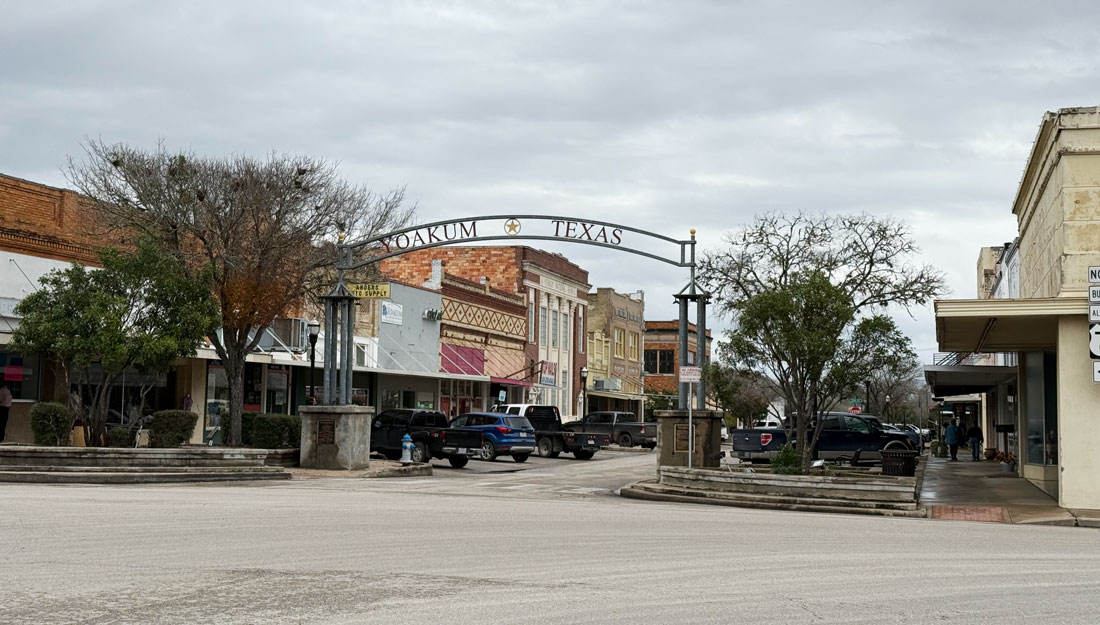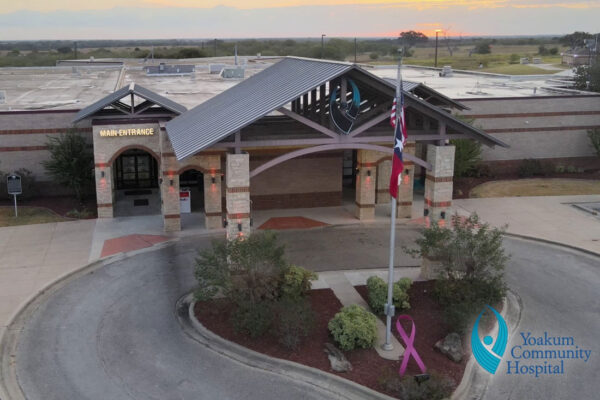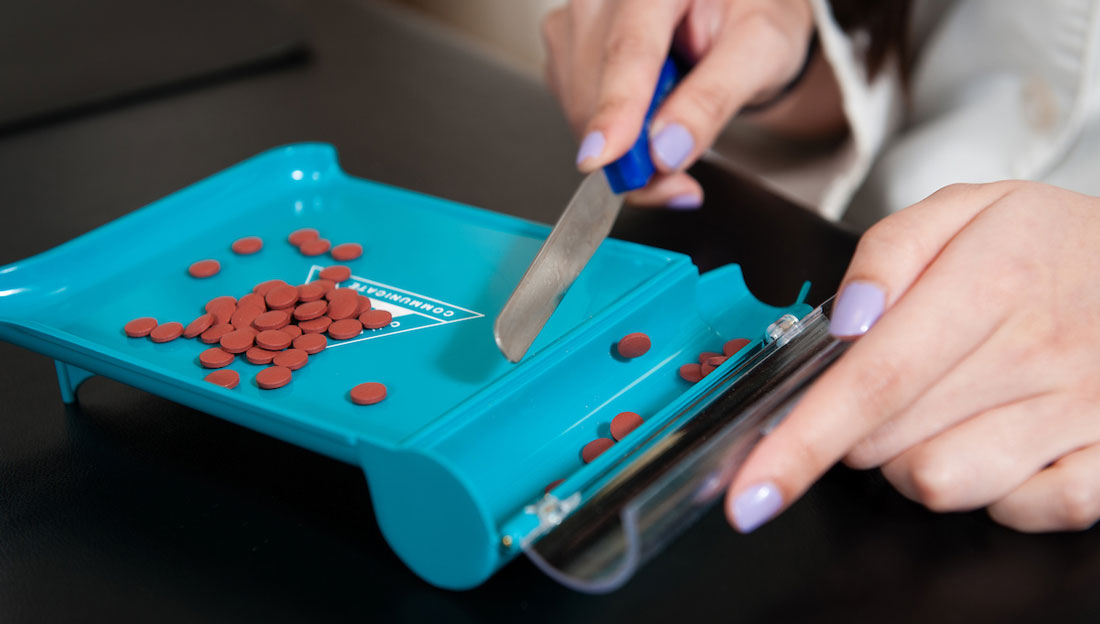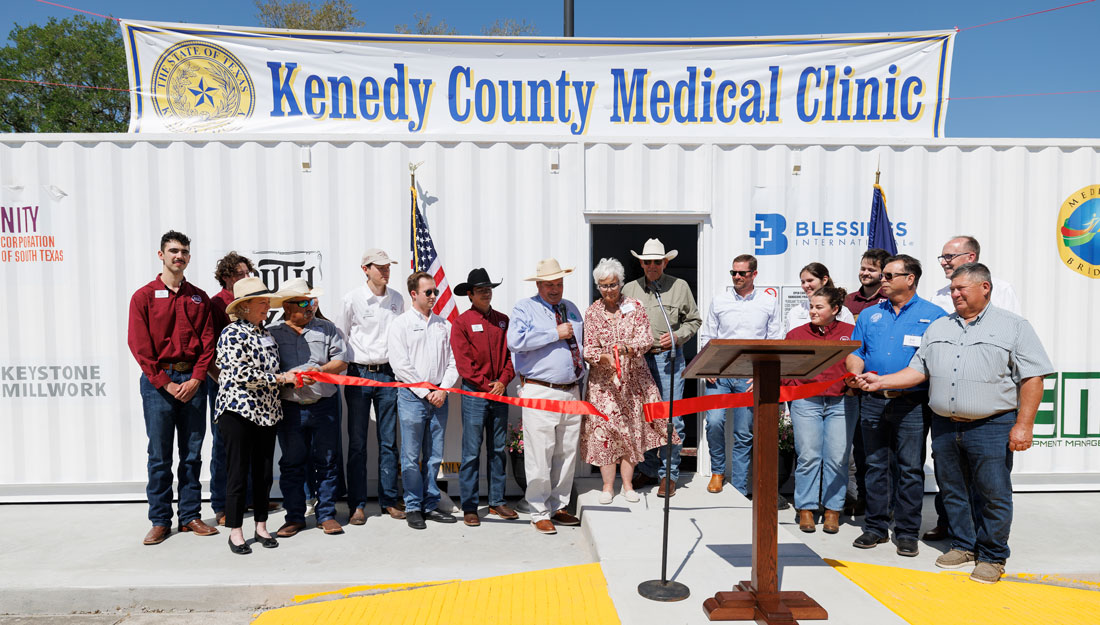- Lurel DeBrá
- Community, Community Impact, Homepage Featured, Medicine, Show on VR homepage
Yoakum Community Hospital works with Texas A&M Health to bring high-quality care close to home
With support from the Rural Engagement Program, Yoakum Community Hospital is enhancing services and strengthening rural health in South-Central Texas

Yoakum, Texas, was established in 1887 and is located on the Lavaca-DeWitt county line. (Contributed photo)
Yoakum, Texas—a small city of about 5,900 residents nestled between San Antonio and Houston—is well-known for its deep-rooted history and strong sense of community. Frequently referred to as both the “Tomato Capital of South-Central Texas” and the “Leather Capital of Texas,” Yoakum is also home to one of the top 100 critical access hospitals in the country: Yoakum Community Hospital.
Since 1922, Yoakum Community Hospital has been a pillar of health care in the region. The 23-bed critical access facility provides essential health care services for surrounding residents, including trauma and emergency care, rehabilitation, surgical services, radiology, imaging and pain management. In 2022, the hospital celebrated its 100th anniversary and soon after welcomed a new CEO, Tiffany Miller.
“I grew up in a rural community and knew I wanted to make my way back to a rural setting,” Miller said. “The opportunity to lead a community-focused hospital and make a tangible difference in people’s lives was the reason I accepted the position at Yoakum Community Hospital.”
Meeting evolving community needs
Miller recognizes the hospital’s strengths—top-rated professionals, state-of-the-art medical technology and dedicated staff—but she also maintains a growth mindset focused on meeting the evolving needs of the community.
“We are the health line for the community,” Miller said. “We must continue to further develop our service line offerings based on community need.”
Service line development, whether starting new services or expanding current ones, helps rural hospitals remain competitive and financially stable. Incorporating rural health experts in the planning process helps hospitals identify the most impactful service lines, optimize resource allocation and enhance overall quality of care. However, this type of planning support requires a substantial financial investment—a resource that many rural hospitals struggle to access. That’s where the Texas A&M Health Rural Engagement Program steps in.
A strategic partnership for rural health
Miller first learned about the Rural Engagement Program while attending the Texas Organization of Rural & Community Hospitals (TORCH) Spring Conference in 2024. The initiative is led by rural health professionals from the Texas A&M Rural & Community Health Institute (RCHI) and the Texas A&M colleges of medicine and nursing. Its purpose is to expand access and fortify health care delivery for the millions of Texans living in rural areas.
Soon after learning about the Rural Engagement Program, Miller met with the program’s technical assistance team to identify key opportunities to enhance the hospital’s services. Together, they decided to start with optimizing Yoakum Community Hospital’s swing bed program.
Enhancing swing bed services
Swing bed programs allow hospitals to utilize beds for two categories of care instead of just one. Hence, the beds can “swing” from being used for emergency care (acute care) to being used for skilled nursing/rehabilitative care (post-acute care). Maximizing the efficiency of these programs in rural hospitals can significantly improve patient outcomes and hospital sustainability.

Rural Engagement Program technical assistance advisors collaborated with Yoakum Community Hospital’s leadership team to create a comprehensive plan with the goal of increasing the average daily swing bed census over the next nine to 12 months. To do this, they connected the hospital with industry experts Stephen Leone, a licensed physical therapist and CEO of Leone Rehab Resources, and Barbara C. Carey, president of TCI – The Communication Institute, who provided consultative and professional services.
“Rural hospital leaders know that swing bed programs offer patients the opportunity to receive skilled nursing and rehabilitation in a local hospital setting,” Leone said. “Lower nurse-to-patient ratio, weekly provider visits instead of monthly, increased physical, occupational and speech therapy, and private rooms for patients are just some of the benefits this program offers.”
To raise awareness about the enhanced program, TCI created customized video and print media featuring the message, “Patients receive double the therapy in half the time.” The communications plan focused on educating patients and raising awareness of the high-quality care available close to home.
The Rural Engagement Program fully funded both the swing bed optimization program and the marketing campaign. Since completing these two strategic initiatives, the hospital has experienced several positive outcomes: increased utilization of swing bed services, improved relationships with larger hospitals and a solidified integral patient service and revenue source for the hospital.
“We are deeply appreciative of the Texas A&M Health Rural Engagement Program and the role it has played in our hospital’s success,” Miller said. “Our collaborative efforts have allowed us to implement comprehensive plans that address key areas of operation.”
Investing in the rural health workforce
Beyond service line development, Yoakum Community Hospital is also investing in workforce development by partnering with the Texas A&M College of Medicine’s Rural Medicine Program. This initiative, a key component of the Rural Engagement Program, facilitates rotations for medical students in rural communities across Texas.
James Stafford, MSHA, director of clinic operations for Yoakum Family Practice, is committed to mentoring these medical students.
“At our hospital, we deeply value community and service to our neighbors,” Stafford said. “Partnering with Texas A&M has been an honor, allowing us to contribute to shaping and supporting the future leaders and clinicians of health care.”
Courtney Welch ’01 ‘20, MD, also feels strongly about inspiring the next generation of rural health care providers. Welch grew up in Yoakum, graduated from Texas A&M and is now practicing in the family medicine practice started by her dad, James Drost, MD.
“It’s imperative to train up the next generation of physicians to meet the needs of the many rural Texans,” Welch said. “I am honored to be partnering with Texas A&M to promote the importance of rural health care. It is my passion to serve a rural community, and I hope to inspire others to do the same.”
The swing bed program
- Utilizes valuable resources—hospital beds are used for two categories of care instead of just one; hence, the beds can “swing” from being used for emergency care (acute care) to being used for skilled nursing/rehabilitative care (post-acute care)
- Can provide increased revenue from an additional service line
- Can be cost-efficient—allows rural hospitals to care for patients locally instead of transferring them to larger, distant facilities thereby reducing transportation costs
- Can improve patient care—patients will receive a higher level of care from being in a hospital during their rehabilitation; and patients are close to home so friends and family can offer support during their recovery
Media contact: media@tamu.edu


